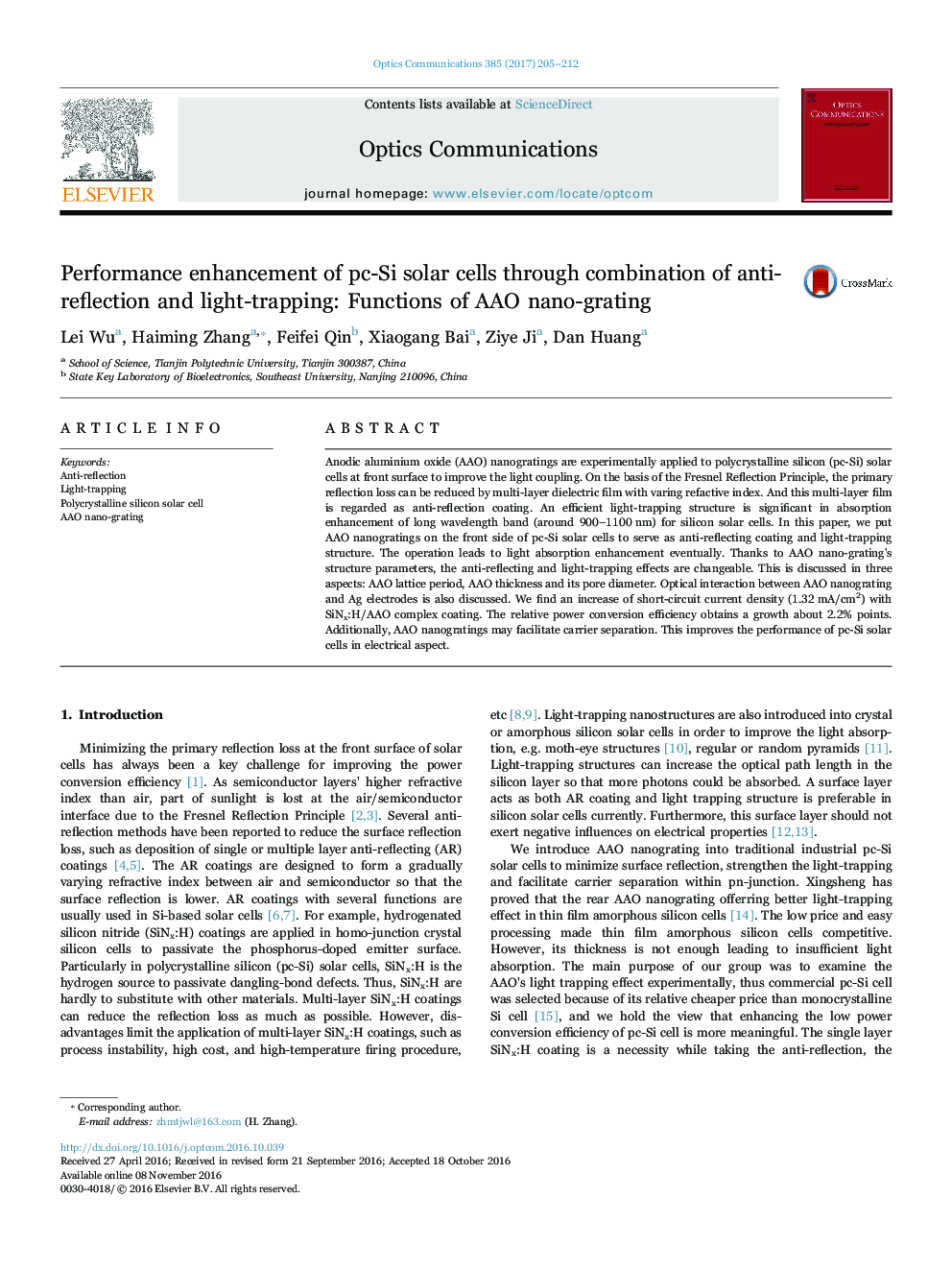| Article ID | Journal | Published Year | Pages | File Type |
|---|---|---|---|---|
| 5449877 | Optics Communications | 2017 | 8 Pages |
Abstract
Anodic aluminium oxide (AAO) nanogratings are experimentally applied to polycrystalline silicon (pc-Si) solar cells at front surface to improve the light coupling. On the basis of the Fresnel Reflection Principle, the primary reflection loss can be reduced by multi-layer dielectric film with varing refactive index. And this multi-layer film is regarded as anti-reflection coating. An efficient light-trapping structure is significant in absorption enhancement of long wavelength band (around 900-1100Â nm) for silicon solar cells. In this paper, we put AAO nanogratings on the front side of pc-Si solar cells to serve as anti-reflecting coating and light-trapping structure. The operation leads to light absorption enhancement eventually. Thanks to AAO nano-grating's structure parameters, the anti-reflecting and light-trapping effects are changeable. This is discussed in three aspects: AAO lattice period, AAO thickness and its pore diameter. Optical interaction between AAO nanograting and Ag electrodes is also discussed. We find an increase of short-circuit current density (1.32Â mA/cm2) with SiNx:H/AAO complex coating. The relative power conversion efficiency obtains a growth about 2.2% points. Additionally, AAO nanogratings may facilitate carrier separation. This improves the performance of pc-Si solar cells in electrical aspect.
Keywords
Related Topics
Physical Sciences and Engineering
Materials Science
Electronic, Optical and Magnetic Materials
Authors
Lei Wu, Haiming Zhang, Feifei Qin, Xiaogang Bai, Ziye Ji, Dan Huang,
